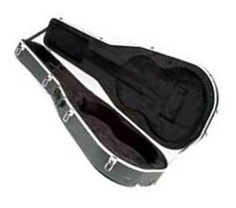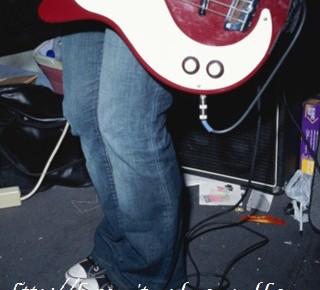What Are Open String Chord Extensions?
 Chords are very lenient – once you get to know them.
Chords are very lenient – once you get to know them.
You can take a chord and add or subtract notes to change its properties. Sometimes it sounds great, sometimes…not so much.
The key to proper chord extensions is to know your musical intervals. This will help you to understand what sounds good and why, and what sounds bad and why.
The first thing you will need to do is take a look at your chords. Every real chord in music has three things; a root, a third, and a fifth.
If you take any of those things away, the chords ceases to be a chord. That means, if you are going to alter a chord, in order to keep it a chord, you need to understand what it is you are doing. This is where that knowledge of intervals and their relationships comes in handy.
Deciphering Music Intervals
Certain intervals work together, such as a minor third and a major third. Certain intervals don’t work together at all, such as a major seventh and a perfect fourth. While in some cases two crazy intervals can work together (some chords do employ a perfect fourth and a major seventh with pleasant results), if you don’t understand the context in which you are placing the chord, you will have trouble trying to fit extreme intervals together to achieve great sounding chords.
The first step to understanding the context in which you are placing the chord is to simply look at the scale. If the song is in C Major, your best bet is to keep away from sharps and flats.
Why You Might Want to Avoid Playing Notes Outside the Scale
 The will sound out of place, and although dissonance is nice once in a while, improper and repetitive use of dissonance is displeasing to most listeners. This is why so many trained musicians have a hard time listening to certain extreme genres of music, as many musicians within those genres simply abandon all rules and cram notes together to sound evil.
The will sound out of place, and although dissonance is nice once in a while, improper and repetitive use of dissonance is displeasing to most listeners. This is why so many trained musicians have a hard time listening to certain extreme genres of music, as many musicians within those genres simply abandon all rules and cram notes together to sound evil.
Ugly sounds different from evil; this is something that many of those musicians fail to comprehend.
If you wish to add open notes and extend your chord, you are going to either need to grow extra fingers, or you are going to need to play a chord that is already open or has a readily available open note octave.
Don’t Overdo or Things Will Get Weird
You can only change a chord so much before it sounds far too different to recognize. In the case of adding tons of notes, you risk sacrificing the integrity of the chord in favor for making it sound larger. You stand a fifty-fifty chance of simply ruining the quality of the chord. This is why it is so dire to understand intervals; we cannot stress it enough!
Proper knowledge of intervals will save you from your exploratory self. The only way to understand is to learn, and to learn your intervals you need to be willing to dedicate some time to the basic principles of musical theory. The best way to do this is to either take a class, or to buy a book which outlines the principles of musical theory. Whichever route you choose, remember; knowing is half the battle.
Transform Yourself From An Average Player Into a Competent Bassist
JamPlay has thousands of video lessons that are conveniently arranged in structured lesson sets. With high quality instructions from world renowned bassists, Jamplay is an unparalleled learning resource. Whatever your genre preferences, you’ll find something here to help you improve your current level of playing.
Related Articles
Comments are closed.





